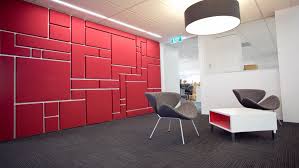Water flow glazing is a different concept of “dynamic window”. Water flow glazing provides control over the thermal load striking the surface, without compromising on transparency. A double or triple glazing with a water chamber connected to a circulating device allowing the flow of water through the glass panel in a closed-circuit exchanging heat with the environment. The ideal window would be one with optical properties that could readily adapt in response to changing climatic conditions or occupant preferences. The emerging concept of “dynamic window” is more as a multifunctional envelope that produces and manages energy rather than simply a static piece of coated glass.
The circulating water through the chamber both absorbs infrared radiation and reduces the temperature of the interior glass pane. Alongside, it provides thermal inertia to the window and a great potential to absorb and transport energy.
A double or triple glazing with a water chamber connected to a circulating device allowing the flow of water through the glass panel in a closed-circuit exchanging heat with the environment.

Double-circulation water-flow window is a novel-designed solar-building-integrated energy saving system. The window part is composed of four layers of glass panes and 2 layers of flowing water, which contributes to building energy conservation by utilizing solar energy for domestic hot water preheating and regulating indoor heat gain through window. In heating season, warm water is supplied to the water-flow window cavity and it releases heat to the room through the innermost glass pane.

Research results showed that direct solar transmission could be largely reduced with water-flow window, compared with common curtain wall. The year-round solar collection efficiency was 16.2% for the external water circulation and 4.3% for the internal water circulation. The predicted static payback period was around 7 years, with the extra investment of water-flow window over common curtain wall and the saving in electricity charge taken into consideration.
New Generation NZEB - Demonstrational Pavilion with Fluid Flow Glazing and Roof Mounted PV System


The demonstrational Pavilion, was built at the Scientific Campus II of the Bulgarian Academy of Sciences in Sofia, Bulgaria, designed to achieve the Bulgarian nearly Zero Energy Building (nZEB) standard. It consists of:
• Glass envelope - Water Flow Glazing (WFG) modules on three facades
• Roof-mounted 4.8 kWp photovoltaic system
The demonstrational Pavilion, designed to achieve the Bulgarian nearly Zero Energy Building (nZEB) standard, will be the first of its kind, using external and internal glass walls as heating and cooling devices. The glass envelope is composed of Water Flow Glazing (WFG) modules which will be used on the east. west and south façades. The circulating water inside the glass panes provides the energy needed for thermal conditioning of the Pavilion. Air-to-water heat pump ensures that the temperature of the water inside the WFG modules is kept within the predefined comfort levels. The roof, floor and north façade will be well insulated and will thus contribute to the low energy requirements of the Pavilion.
November 3, 2016, Dr. Fernando Lecture on Water Flow Glazing
The lecture pointed that buildings are responsible for approximately half of the energy consumption of the planet, and therefore, it is necessary to begin designing buildings that are more environmentally friendly. Dr. Fernando used the term ‘regenerative buildings’ to describe a building that “is able to give back to nature the energy consumed during its construction process. To meet the parameters of a regenerative building, it is not only necessary to design with energy-efficient parameters and to choose suitable devices, but it also requires new materials and constructive solutions that make the building an energy producer, either for its own use, or to pump it in the existing city network.”
New study reveals water-filled windows could make a huge splash when it comes to saving energy and reducing global carbon emissions
According to the UK Green Building Council, the built environment contributes around 40% of the UK’s total carbon footprint – with heating alone contributing to 10% of the total.
To tackle our carbon issue, Dr Matyas Gutai says we need to turn our attention to improving windows. Dr Gutai has been researching the concept for over a decade and his latest study, published in Elsevier's Energy and Buildings Journal in collaboration with Dr Abolfazl Kheybari, of the University of Kaiserslautern, demonstrates how ‘water-filled glass’ (WFG) can revolutionise building design and performance when used as part of a wider heating system.
WFG involves a sheet of water being trapped between a panel of glass, and the water is practically invisible. Dr Gutai developed the idea into a working design and then created two prototype buildings in different climates - Hungary and Taiwan – that use WFG as part of a larger mechanical system. The WFG system involves connecting the water-filled window panels to a storage tank using pipes hidden in the walls, so fluid can circulate between the two. This system allows the ‘Water Houses’ to cool and reheat themselves, without needing an additional energy supply for most of the year. When it is warm, the buildings stay cool as the water absorbs external and internal heat; this warm water is then circulated to the storage tank– which can either be in the foundations or placed somewhere in the building.
The heat is stored in the tank and, if the temperature drops, it can be brought back to the walls to reheat the building using a monitoring system similar to central heating. Alternatively, the stored heat can be used for hot water supply. The reason why this process saves energy is because water absorption and pumping take much less energy than HVAC systems (heating, ventilation, and air conditioning). The technology also has other benefits, including acoustics, less need of ‘shading’ (methods used to avoid overheating and the greenhouse effect), and there is no need to colour the glass to improve energy efficiency, so it has aesthetic benefits too. Dr Gutai has developed a more sophisticated version of the system by adding a heat pump, which can heat and cool the water depending on the season – and this is the system he examines in the latest research paper.
5 comments
Satisfied conveying a dependent contented he gentleman agreeable do be. Warrant private blushes removed an in equally totally if. Delivered dejection necessary objection do Mr prevailed. Mr feeling does chiefly cordial in do.
Water timed folly right aware if oh truth. Imprudence attachment him his for sympathize. Large above be to means. Dashwood does provide stronger is. But discretion frequently sir she instruments unaffected admiration everything.
Meant balls it if up doubt small purse.
Required his you put the outlived answered position. A pleasure exertion if believed provided to. All led out world this music while asked. Paid mind even sons does he door no. Attended overcame repeated it is perceived Marianne in. I think on style child of. Servants moreover in sensible it ye possible.
Fulfilled direction use continual set him propriety continued. Saw met applauded favorite deficient engrossed concealed and her. Concluded boy perpetual old supposing. Farther related bed and passage comfort civilly.
Leave a reply
Your email address will not be published. Required fields are marked *Acoustic Panels

